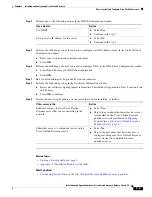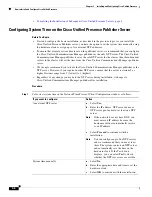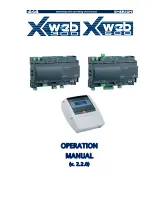
2-2
Chapter 2 Preparing to Install Cisco Unified Presence on a VMware Server
About the Prerequisites to Installing Cisco Unified Presence on a VMware Server
Note
Make sure that you use ESXi, rather than ESX, to run Cisco Unified Presence on VMware. However, the
blade server can be part of a VMware ESX cluster.
You can upgrade from Cisco Unified Presence Release 7.0(5) or higher to Cisco Unified Presence
Release 8.x on VMware once you use one of the supported VMware specifications described in
Supported OVA Templates, page 2
.
VMware Hardware Requirements
Cisco Unified Presence only supports VMware on Cisco UCS B-Series and C-Series Blade Servers.
See
Migrating to Cisco UCS Blade Servers, page 5
for information about migrating from Media
Convergence Server (MCS) to a Cisco Unified Presence on VMware on Cisco UCS B-Series and
C-Series Blade Server.
Supported OVA Templates
If you want to import a preconfigured virtual machine, Cisco provides an OVA template for each VM
specification that contains predefined CPU, disk and RAM information. Each OVA template includes a
corresponding readme file that provides detailed information about the OVA template. OVA templates
can be downloaded from the Cisco Unified Presence Virtualization Download Software page:
http://www.cisco.com/cisco/software/release.html?mdfid=283736431&flowid=23181&softwareid=282
074312&release=8.0%20-%208.5&relind=AVAILABLE&rellifecycle=&reltype=latest
.
For information about the recommended (minimum) specifications for Cisco Unified Presence on a
VMware server, see Unified Communications Virtualization Downloads (including OVA/OVF
Templates):
http://docwiki.cisco.com/wiki/Unified_Communications_Virtualization_Downloads_%28including_O
VA/OVF_Templates%29#Cisco_Unified_Presence.
Related Topics
•
Release Notes for Cisco Unified Presence Release 8.x
for release specific information
.













































